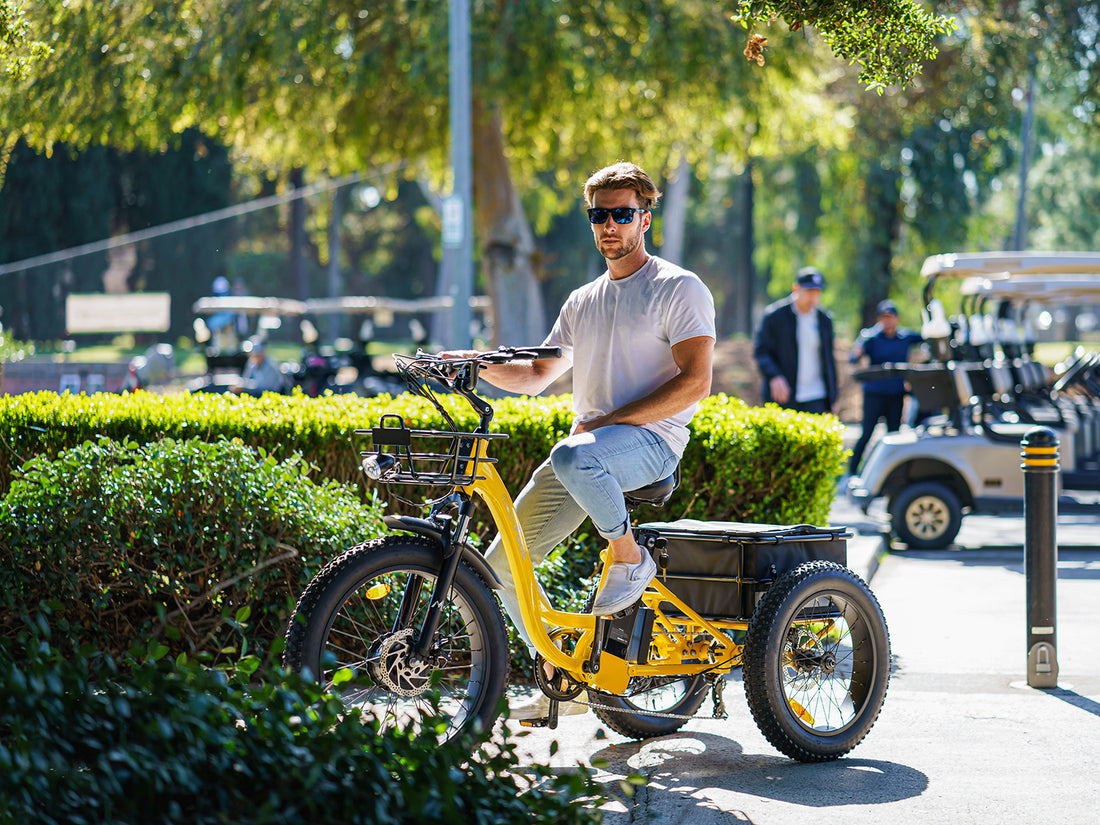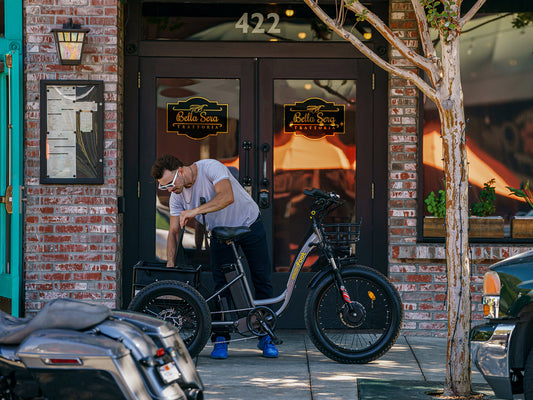The pedal assist system (PAS) is the primary feature that distinguishes electric bikes from their traditional counterparts. But how exactly does it work? How does it harness motor power to reduce the effort of riding?
In this article, we will understand the pedal assist system in depth. We'll explore the various forms found in different e-bikes and the levels of assistance they provide to riders.
How Does A Pedal Assist System in Ebike Work?

The Pedal Assist System is designed to mimic the experience of riding a conventional bike while significantly reducing the rider's effort. This unique system is what makes electric bikes an appealing choice for a wide range of cyclists, from daily commuters to recreational riders.
Unlike a regular bike, where the rider's effort is the sole source of power, PAS introduces an electric component that augments this effort. When a rider pedals, the system activates a motor, which provides additional power to the wheels. The result is a smoother, less strenuous ride, which helps in covering longer distances and climbing hills more easily.
The core principle of PAS is to sense the rider's input and respond accordingly. It uses sensors to detect how fast and how hard the rider is pedaling and then engages an electric motor to provide a proportional level of assistance. Typically, two types of sensors are used in PAS: cadence sensor and pedal assistance sensor.
Cadence-Based Pedal Assist System

The Cadence-Based PAS is the most common type found in electric bikes. It consists of a ring of magnets mounted on the pedal crank and a sensor fixed to the bottom bracket. As the rider pedals, the sensor reads the rate of pedaling, known as the pedal cadence. The principle is simple: the faster the pedal cadence, the faster the controller makes the motor spin, providing more assistance to the rider.
However, this system has a significant design flaw. The speed at which a rider pedals doesn't always correlate with the amount of power needed. For instance, on flat ground, faster pedaling typically means a higher speed, thus requiring more power.
But when pedaling up a hill, even though more power is needed due to the incline, the pedaling speed is slower because of the increased resistance. This discrepancy can result in the bike being underpowered when climbing hills, which is often when a rider needs the most assistance.
Torque Sensor-Based Pedal Assist System

A more advanced and efficient system is the Torque Sensor PAS. This system involves a torque sensor, usually mounted on the pedal crank or near the rear dropout. Unlike cadence, it measures the amount of torque (or force) being applied during pedaling. Based on that value, the exact amount of assistance is supplied.
The torque sensor PAS provides a more intuitive and responsive riding experience. It adjusts the motor’s power output more accurately according to the rider's actual effort (force applied). So, when climbing hills, the system can provide more assistance as the rider exerts more force on the pedals, making the ride feel significantly easier.
The torque system is far better than the cadence-based system as the assistance is tailored based on the rider’s exact force, rather than just the pedaling rate.
Advantages of Pedal Assist System

PAS inclusion in ebikes is due to a range of benefits it offers compared to traditional cycling or throttling:
Customizable Assistance Levels: PAS systems come with adjustable settings that allow riders to choose the level of assistance they need. Riders can select a more intense workout by reducing assistance or opt for more help when they need a break or face challenging terrains.
Accessibility for a Wider Range of Riders: PAS opens up cycling to people who might otherwise find it too physically demanding, such as older adults, those with certain disabilities, or individuals recovering from injuries.
Energy Efficiency: Compared to throttle-only electric bikes, PAS systems are more energy-efficient. Since the motor only assists while pedaling, it conserves battery life, allowing for longer rides on a single charge.
Natural Riding Experience: Especially with torque sensor-based PAS, the riding experience feels more natural and similar to traditional biking. The motor assistance is proportional to the effort, making the transition from regular bikes to electric bikes smoother.
PAS Levels in Ebikes

Electric bikes equipped with a PAS feature multiple levels of assistance. These levels range from 0 to 7, and each one offers a different degree of motor assistance, speed limits, and range
PAS 0: No Assistance Mode
When the pedal assist mode is set to “0”, the pedal assist function does not engage. This means the bike operates like a regular bicycle without any motor assistance. However, you may still use the throttle to propel the bike.
PAS 1-3: Low Assistance
PAS 1 is the starting level, which is known to provide speeds up to 8 mph. The bike’s maximum range listed on the spec sheet is based on PAS level 1. Between levels (1-3), the bike’s speed reaches up to 12 mph.
PAS 4-5: Moderate Assistance
Offer motor-assisted speeds of 14-16 mph and a significantly less range. If the top range of the bike is 65 miles, expect it to be 45 to 50 miles now.
PAS 6-7: Full Assistance
These levels provide the highest degree of assistance, with motor-assisted speeds of 18-20 mph and the least possible range, something between 30 to 40 miles. However, this speed provides a more exhilarating ride experience on roads.
PAS Comparison with Throttle System

A second power system is also found on ebike with ‘throttle on demand’. The throttle system turns an e-bike into something akin to a motorbike – twist the throttle, and the bike moves forward without any need for pedaling. However, this convenience comes with higher power consumption, which results in reduced range compared to the PAS system. The PAS system only assists the rider, providing when needed.
In many ebikes, such as those designed by Maxfoot, both systems are collectively found, however, PAS is generally recommended for its energy efficiency and longer battery life. A throttle might be used in specific scenarios, like starting from a standstill or on steep inclines, where an immediate power boost is needed.




